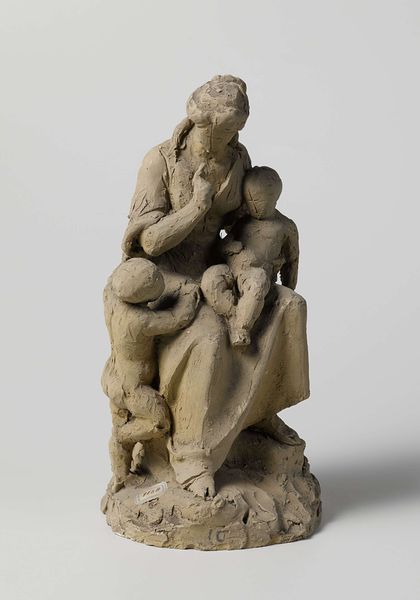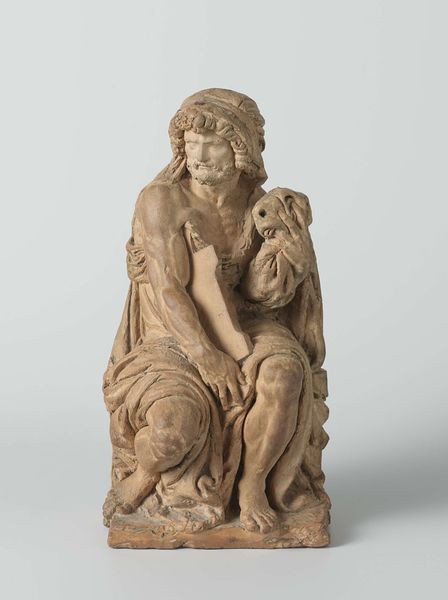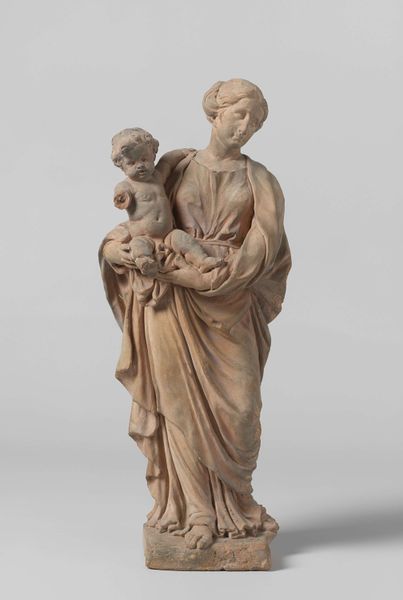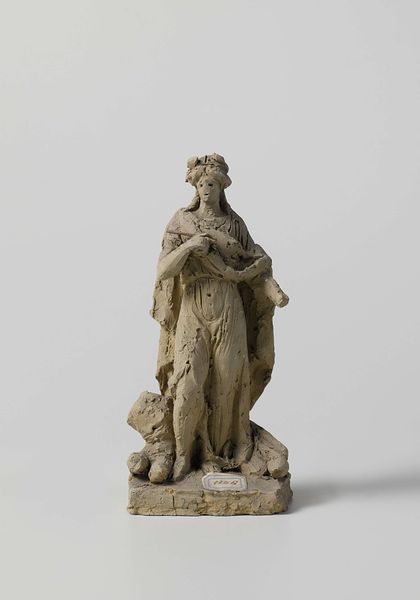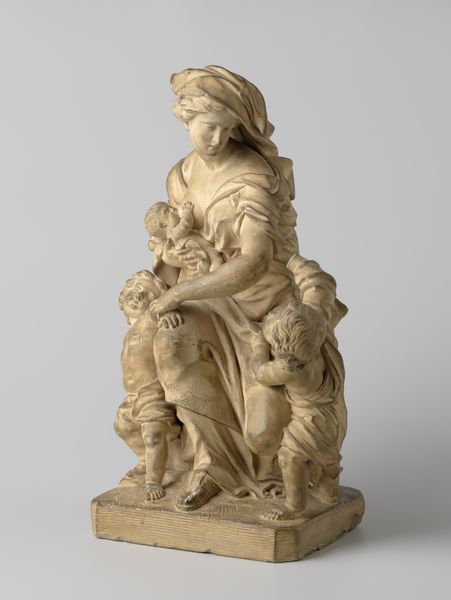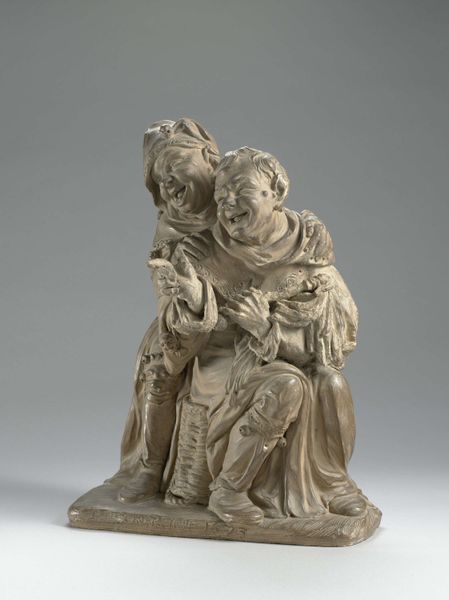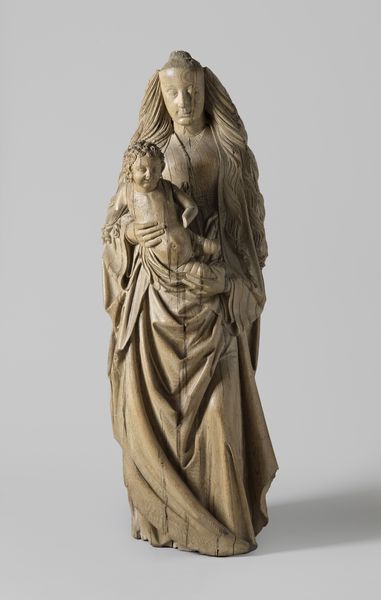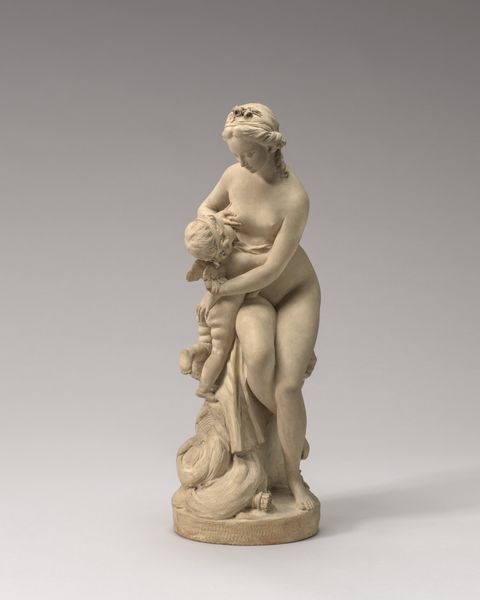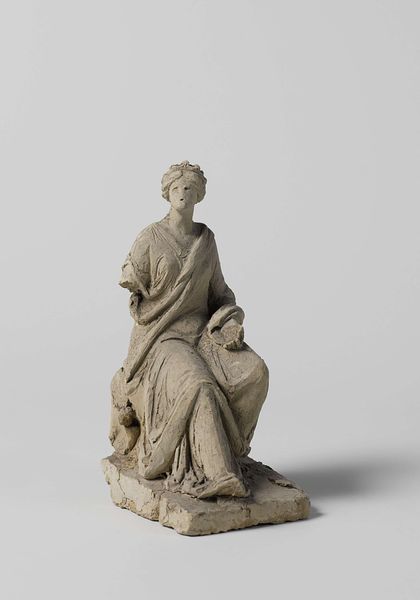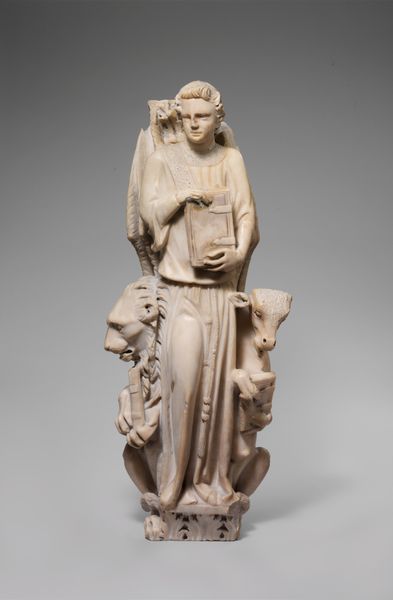
bronze, sculpture, marble
#
sculpture
#
bronze
#
figuration
#
sculpture
#
group-portraits
#
marble
#
realism
Dimensions: height 23 cm, width 11 cm, depth 9.7 cm
Copyright: Rijks Museum: Open Domain
Editor: This is "Moeder met twee kinderen" – "Mother with Two Children" – made of bronze by Eugène Lacomblé in 1881. There is something so tender and vulnerable about the mother's gesture. What readings do you feel resonate here? Curator: It's interesting you pick up on the tenderness. Look at the composition itself. Do you see how the two children flank the mother, creating almost a protective barrier? Though headless, the mother's arms are positioned not so much cradling as presenting the children. Perhaps this represents more than mere maternal affection. Editor: I hadn't considered a meaning beyond the tenderness between a mother and children. What else could this posture suggest? Curator: Perhaps it speaks to inheritance, lineage. Mothers as conduits. Look at the date, 1881; what’s on your mind when thinking about the late 19th century? What sort of historical forces were impacting cultural memory at the time that may have moved the artist to sculpt this group? Editor: A time of immense change with industrialization and the rise of nation-states... So, the sculpture could speak to anxieties surrounding these societal shifts, where family and legacy become symbols of continuity? Curator: Precisely. The headless figure also begs the question of identity – maybe intentionally left blank to represent all mothers. It reminds us how symbols and imagery have such emotional, cultural, and psychological reverberations across time. This maternal iconography resonates still, don't you think? Editor: Definitely! The blank face transforms it into a universal symbol. It’s powerful how examining these layers unlocks deeper cultural significance. Curator: Exactly! A single sculpture becomes a potent lens through which to observe the enduring influence of maternal imagery.
Comments
No comments
Be the first to comment and join the conversation on the ultimate creative platform.
